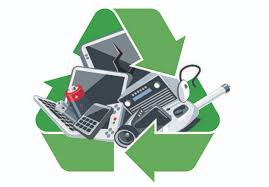A glance at India's e-waste regulations and what you can do to manage your e-waste
Waste management, especially when it comes to plastic, has been given a lot of attention over the years in the nation. Plastics became the overwhelming focus in the nation's discourse on environmental conservation this World Environment Day. In any case, somehow, the issue of e-waste, which is among the most dangerous sorts of waste — for it contains heavy metals and other harmful chemicals — remains treacherous.
Even today, when India is among the world's largest consumers of mobile phones with 1.5 million tons of e-waste generated in 2015, most consumers are as yet unaware of how to dispose of their e-waste. Most Indians end up selling their e-waste to the casual sector, which poses severe threats to human (counting children's) lives, with its improper and profoundly perilous methods of extracting the trace measures of precious metal from it and dealing with e-waste for benefit.
The government passed the primary law on e-waste management in 2011, based on Extended Producer Responsibility (EPR), which put the onus on the producer for the management of the last stages of the life of its item, in an eco-friendly way, by creating certain standards in tandem with state contamination control sheets. However, it didn't set collection targets; this was amended in the new law, passed two years back. What is the effect? E-waste Collection Center Near Me.
Sandip Chatterjee, a creator of the paper 'Electronic Waste and India'; Director, Service of Electronics and Data Technology; and the nodal officer in the Service for developing Recycling technologies of Electronic Waste management, shares his personal views.
How have the new laws on e-waste management in India been effective?
E-waste (Management) Rules, 2016, enacted since October 1, 2017, had further strengthened the existing rules. Over 21 items (Schedule-I) were included under the purview of the rule. The rule likewise extended its purview to components or consumables or parts or spares of Electrical and Electronic Equipment (EEE), alongside their items.The present rule has strengthened the Extended Producer Responsibility (EPR), which is the worldwide best practice to ensure the take-back of the end-of-life items. A new arrangement entitled, 'Producer Responsibility Association' (Professional) has been introduced to strengthen EPR further. Genius, a professional association, would be authorized or financed collectively or independently by producers, to share the responsibility for collection and channelization of e-waste generated from the 'end-of-life' items to ensure environmentally solid management of such e-waste.
The rule has provisioned the target for the producers, which was absent in the primary version of the Rule (2012). Presently, manufacturers are mandated to take back their sold items with recommended mechanisms.
The present Rule ensures that every producer of electrical and electronic equipment (EEE) and their components or consumables or parts or spares will ensure that new EEE and their components or consumables or parts or spares don't contain contaminations, for example, lead, mercury, cadmium, hexavalent chromium, polybrominated biphenyls and polybrominated diphenyl ethers beyond the greatest concentration value. Every producer will provide detailed data on the constituents of the equipment and their components or consumables or parts or spares, alongside a declaration of conformance to the RoHS (Restriction of Perilous Substances) arrangements in the item user documentation. Imports or placement in the market for new electrical and electronic equipment will be permitted uniquely for those which are agreeable to arrangements of (sub-rule (1) and sub-rule (4)) rule 16.
What might you suggest as a step-by-step guide for a citizen who needs to dispose of his electronic gadget (phone/television/PC/something else) in the correct way?
Effective awareness would be the correct step for all stakeholders. As per the rule, manufacturers have been mandated to create awareness in the nation.
The Service of Electronics and Data Technology, MeitY, has initiated an E-waste Awareness program under Advanced India initiatives, alongside industry relationship from 2015, to create awareness among people in general about the perils of e-waste recycling by the unorganized sector, and to educate them about alternate methods of discarding their e-waste.
The program stresses the need for embracing environmentally friendly e-waste recycling practices. The general open is likewise encouraged to participate in 'Swachh Advanced Bharat', by giving their e-waste to authorized recyclers as it were. E-waste Collection Center Near Me.
Has the law constrained manufacturers to accept end-of-life items that had any effect?
In the underlying phase, it is, apparently, non-effective. However, over the years, all the MNCs would abide by the law and the EPR target to maintain a strategic distance from suit and to save their international reputation. EPR implementation would take care of the further course. Stars are likewise created to handhold the manufacturers to implement EPR effectively.Might you be able to feature the importance of e-waste management in India?
E-waste is developing at a compound yearly development rate (CAGR) of about 30% in the nation. Assocham estimated that e-waste generation was 1.8 million metric tons (MT) per annum in 2016 and would reach 5.2 million metric tons per annum by 2020. Unless we have effective implementation of the rule, the nation would end up creating numerous such casual processing centers, for example, those in Moradabad and Seelampur, where soil, water, and air are polluted to a beyond-repairable level.
E-waste additionally contains plastic, up to nearly 25% of its weight. Novel recovery and conversion of e-waste plastics to value-added items have likewise been successfully developed. The developed process is capable of converting a larger part (76%) of the waste plastics into suitable materials, which could be used for virgin plastic items. E-waste Collection Center Near Me.










0 Comments